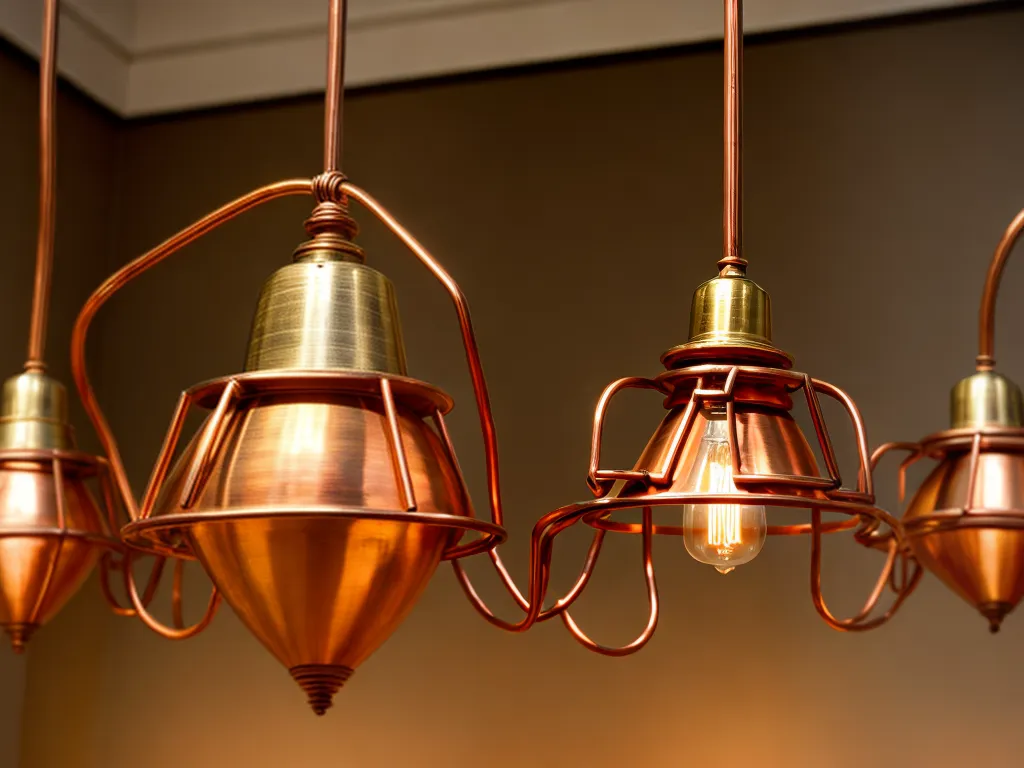
How the Ancient Egyptians Used Copper Wiring in Primitive Light Fixtures
The ancient Egyptians were innovators in many respects, including their use of copper wiring in early light fixtures. While we take electric lighting for granted today, it was a novel concept thousands of years ago. In this article, I will explore how the ancient Egyptians devised primitive lamps and lighting systems using copper, a material that allowed them to harness the marvels of electricity long before the modern era.
Early Evidence of Copper Use in Egypt
The ancient Egyptians began using copper as early as 5,000 years ago during the Predynastic Period. Copper was relatively abundant in Egypt, found in deposits along the Nile valley and Sinai Peninsula.
At first, copper was used to make jewelry, tools, and small statuettes. But the Egyptians soon realized that copper had useful properties beyond just its metallic shine. In particular, they discovered that copper is an excellent conductor of electricity.
We have evidence that Egyptians were using copper wiring in electrical devices as long ago as 2,700 BC. Archeologists have found ancient Egyptian artifacts, including pottery and stone carvings, that clearly depict copper being employed in early battery-like devices.
Why Copper Was Ideal for Ancient Lighting
Once the Egyptians realized that copper transmitted electricity effectively, they began experimenting with using copper wiring in early lighting fixtures and lamps.
There were several key advantages to using copper for lighting:
-
High conductivity - Copper has the highest electrical and thermal conductivity of any non-precious metal. This allowed the Egyptians' primitive circuits to function.
-
Durability - Copper is highly resistant to corrosion. Ancient copper artifacts have survived thousands of years.
-
Ease of use - Copper is very malleable and easy to work with using simple hand tools. This let the Egyptians form it into wire.
-
Abundance - Egypt had abundant native copper deposits, making the metal readily available.
Copper thus provided an ideal material for crafting functional, if rudimentary, lighting systems through basic wiring.
How the Egyptians Made Copper Wiring
To create copper wire for lighting and other uses, the ancient Egyptians had to develop metal working techniques, including:
-
Smelting - Copper ore was first smelted into pure copper metal using furnaces and bellows.
-
Drawing - The copper was then repeatedly heated and hammered to form thin wires.
-
Annealing - Wires were annealed (heated and cooled) to relieve stresses and make them more malleable.
-
Insulating - Crude insulation like bitumen or resin was used to coat parts of the wire.
It took considerable skill, effort, and ingenuity for Egyptian metalworkers to produce serviceable copper wiring with the tools available to them.
Early Light Fixtures Employing Copper
The earliest Egyptian lamps using copper wiring were very simple enclosed vessels, often made of stone or ceramic, containing a copper element that emitted light. Examples include:
-
Flame lamps - Used copper wiring curled into a "wick" shape over a reservoir of flammable oil.
-
Arc lamps - Used two copper rods held close together to generate an arc of electricity/plasma.
-
Filament lamps - Used a copper wire filament that glowed brightly when heated by current.
These lamps provided a sustainable source of artificial light and allowed activities to continue after dark. The copper wiring served to channel electricity to provide illumination.
Later, more complex lamp fixtures evolved, employing copper wiring in creative designs, like the famous Dendera light found in the Hathor temple. This lamp features elaborate wiring and a bulb that many believe functioned like a modern light bulb.
Impact and Legacy
The ancient Egyptians' ingenious application of copper wiring for lighting fixtures and prototypes represents a milestone in the history of technology. Their innovation presaged electrical devices that would only become commonplace thousands of years later.
Even today, copper remains integral to lighting and electricity, used ubiquitously in modern light bulb sockets, switches, and power grids. When we turn on a light, we are enjoying the fruits of technology first pioneered by ancient Egyptian artisans and their rudimentary copper lamps. Their creative legacy shines on brightly through time.